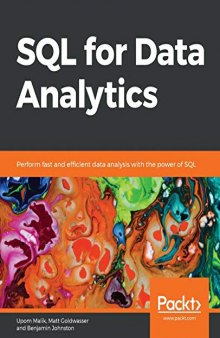 جزییات کتاب
جزییات کتاب
Take your first steps to become a fully qualified data analyst by learning how to explore large relational datasets. Key Features Explore a variety of statistical techniques to analyze your data Integrate your SQL pipelines with other analytics technologies Perform advanced analytics such as geospatial and text analysis Book Description Understanding and finding patterns in data has become one of the most important ways to improve business decisions. If you know the basics of SQL, but don't know how to use it to gain business insights from data, this book is for you. SQL for Data Analytics covers everything you need progress from simply knowing basic SQL to telling stories and identifying trends in data. You'll be able to start exploring your data by identifying patterns and unlocking deeper insights. You'll also gain experience working with different types of data in SQL, including time-series, geospatial, and text data. Finally, you'll understand how to become productive with SQL with the help of profiling and automation to gain insights faster. By the end of the book, you'll able to use SQL in everyday business scenarios efficiently and look at data with the critical eye of analytics professional. What you will learn Use SQL to summarize and identify patterns in data Apply special SQL clauses and functions to generate descriptive statistics Use SQL queries and subqueries to prepare data for analysis Perform advanced statistical calculations using the window function Analyze special data types in SQL, including geospatial data and time data Import and export data using a text file and PostgreSQL Debug queries that won't run Optimize queries to improve their performance for faster results Who this book is for If you're a database engineer looking to transition into analytics, or a backend engineer who wants to develop a deeper understanding of production data, you will find this book useful. This book is also ideal for data scientists or business analysts who want to improve their data analytics skills using SQL. Knowledge of basic SQL and database concepts will aid in understanding the concepts covered in this book.



 دانلود کتاب
دانلود کتاب

 جزییات کتاب
جزییات کتاب





 این کتاب رو مطالعه کردید؟ نظر شما چیست؟
این کتاب رو مطالعه کردید؟ نظر شما چیست؟
